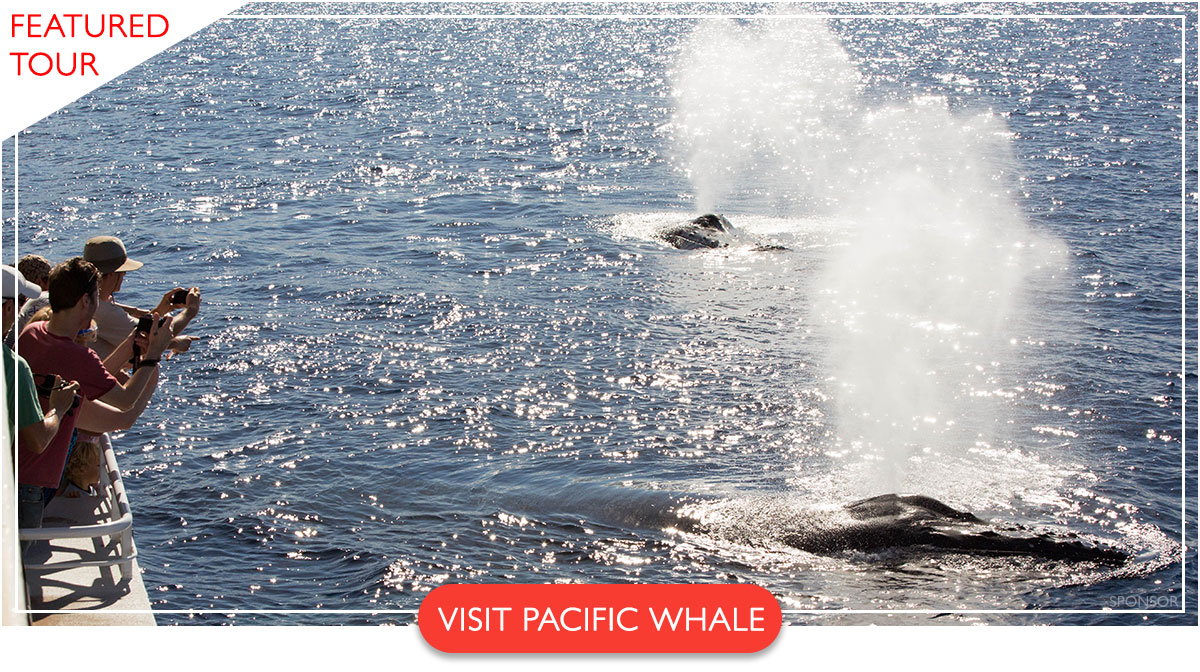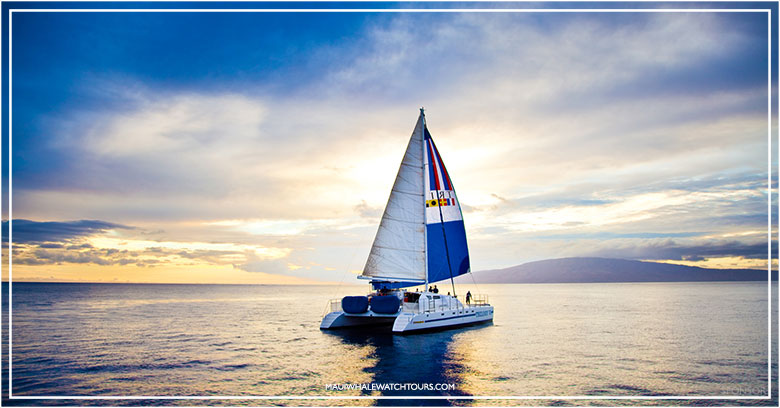Natalie Brown Photography
Natalie Brown Photography
Natalie Brown is well known for her high quality Maui images.
Through the years of living on Maui, Natalie Brown has spent countless patient hours trying to capture the best possible images of Humpback whales. She’s succeeded with some incredible whale photographs, and plans on continuing her efforts every season. On the right, you can follow her work on her own websites or call for photography services.

To help her fellow photographers, she has come up with some helpful tips on capturing your own whale photos.
10 Essential Whale Photography Tips
1. Choose your whale watch boat wisely.
Some can be overcrowded for the room allotted. Sometimes you might not even be able to sit down the boat is so crowded. Some of the best whale watches are done on a large boat with not too many people or on a small boat or raft with very few people. Taking a tour that isn’t specifically geared towards Maui whale watching can sometimes be your best bet. But keep in mind though that the captain will not have the full intention of getting close to the whales on a non-whale watch cruise. If you see whales in the distance, they might not direct the boat that way because you are out there just to cruise, not get whale pictures. But having said that, dinner or drink cruises can still get you some amazing whale images. They will restrict the amount of people on the boat while also cutting down the amount of whale fanatics willing to knock you over for the best shot. It doesn’t happen all the time, but sometimes you’ll find a couple people that are ready to dive in just for a blurry photograph taken from their phone.

2. Find a good position on the boat.
Stake out a good spot to have as home base. Sometimes the first to arrive are the first to choose, so be early. Shoot outside. If you’re inside shooting out of a window, you have less of a perspective than you might outside. Make sure the area you set up in has an easy exit. When the whale circles the boat, you’re going to want to be able to move to other locations. Also, decide what kind of shot you’re looking for. If the whale watch vessel has 2 levels, the upper level will give you more of the ocean in the frame. Often the upper level is more open to move around, but it might not be the best angle. If you get a shot of a whale from the lower level leaping up into the sky it can be more effective than the same photo from above. It will show how far they leap out of the water better, and you might get a bit of a Maui background which makes for a more dynamic shot.

3. Get a good camera.
You need to get a high quality Digital SLR camera with a zoom lens (at least 70 – 200mm or 300mm). Yes, film can capture some great colors and feel, but when shooting whales, you’ll have an easier time with digital. You don’t have to hurry and change your rolls of film with digital. To get a good photograph of a humpback whale, you’re going to need to take quite a lot of images. Along the same lines, it helps to have a good amount of disk space to take all of these images, especially if they’re high-resolution. Shooting with high-resolution cameras makes it easier if the whale is at a distance and excessive cropping is needed to get a good image. A zoom lens is a good idea if you’re able to keep it steady enough. Whales often breach at a distance, which can really only be captured with a zoom lens. If your camera has the ability to shoot sequence shots, you can come up with some spectacular images. A good sequence of a whale breaching often can capture the power and enormity of the event better than a single shot. Most importantly, choose a camera with a high speed. If your camera lags, you may be taking pictures of only the splash after the whale jumps.

4. Steady yourself.
Tripods are difficult and cumbersome to use on a boat, and monopods are almost as bad. If your camera has a fast shutterspeed, you don’t even need to brace yourself on a railing, which is usually the best and easiest option. If the ocean is anything but calm, you’re going to need someway to steady the shot and save yourself from blurry images. Use a fast shutterspeed to keep the image clear.
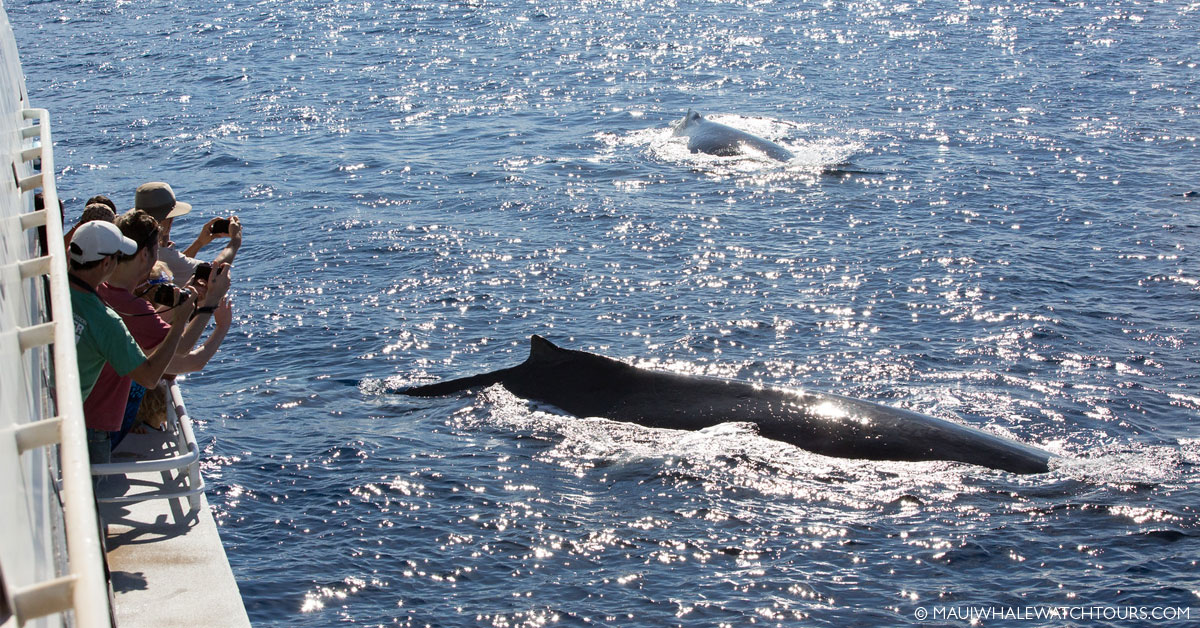
5. Decide what time of day is best for you.
Shooting in the morning will give you calmer waters. If you’re prone to seasickness, take some medication and/or choose to go on the earliest whale watch possible. Mid day, when the sun is shining straight down on the water, you’ll get more of turquoise tropical-looking ocean. The afternoon can cast some spectacular shadows and bright colors on the mountains. Sunset whale photos are really beautiful. The same colors that reflect on the ocean during a sunset can reflect off of a breaching whales body.

6. Check Maui weather conditions.
You want to get sunny, bright whale photos. Poor visibility and turbulent waters can be major boundaries in your path. High winds kick up waves and spray that can affect your shots and your cameras. Calmer sunnier days tend to be the best to shoot, and thankfully, the South and West side of Maui are full of them.

7. Go in Season.
Whale watches run roughly between December 15th and May 15th. The beginning and tail end of the season have the scarcest amount of whale sightings. This doesn’t mean you can’t get a great whale watch in late May. It just means your best chances of seeing the most whales are in January, February, and March. February is the best month to see large groups of whales.
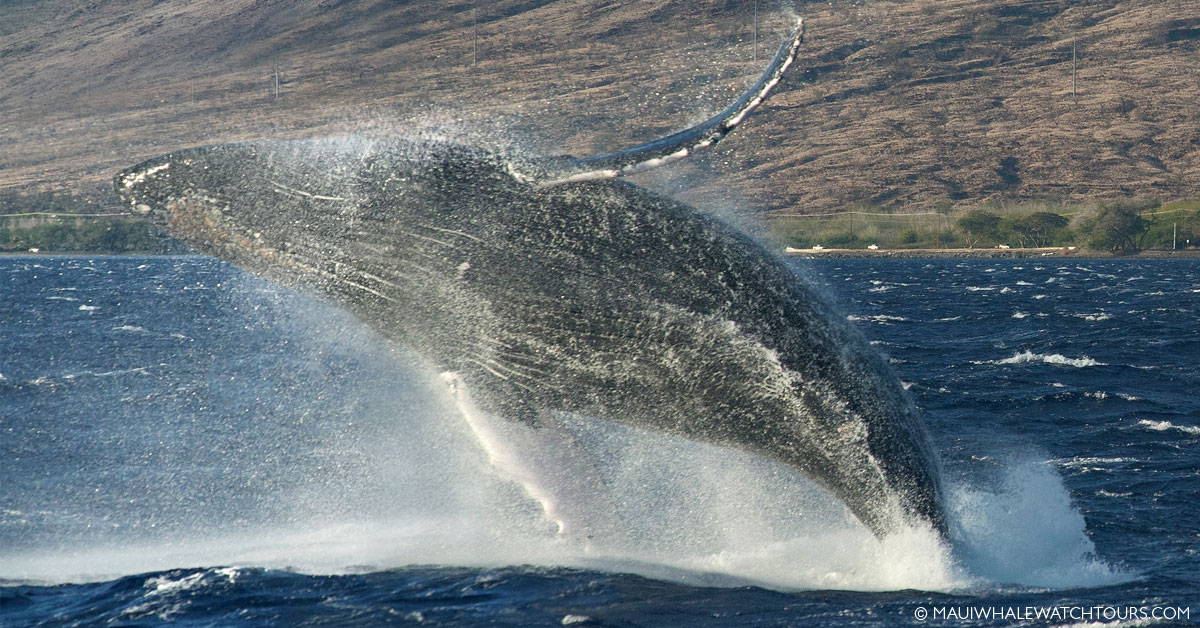
8. Use your peripherals and be prepared.
You’ll be surprised how many times everyone is lurching over one side watching a group of whales while a multiple whale breach goes unnoticed behind them. Captains are usually good at pointing them out, since they usually have the best vantage point and most experience spotting them. But they don’t always catch everything, so be on your toes. Also, whales tend to do their most spectacular surface activity close to your vessel when you’re going through the photos you’ve just taken. Do yourself a favor and check your LCD once your on land. This doesn’t mean you shouldn’t be checking your exposures after your shots. Just don’t thumb through your images while a “whale lull” comes. I swear, they’re waiting for you to do this.

9. Sit back and enjoy!
You ask, “how is this essential to getting good pictures?” Getting excellent whale photos isn’t worth much if you had a horrible time doing it. We regularly see people whale watching completely through their viewfinders. Take a few minutes here and there to sit back and watch these incredible animals with your own eyes. If you miss capturing a great breach, you’ll probably get to see another. Due to zooming and camera adjustments, photograghers miss most of the best surface activity. Those that watch the whales without a camera get a lot more out of it and see much more. Get the full experience by capturing some mental pictures too.
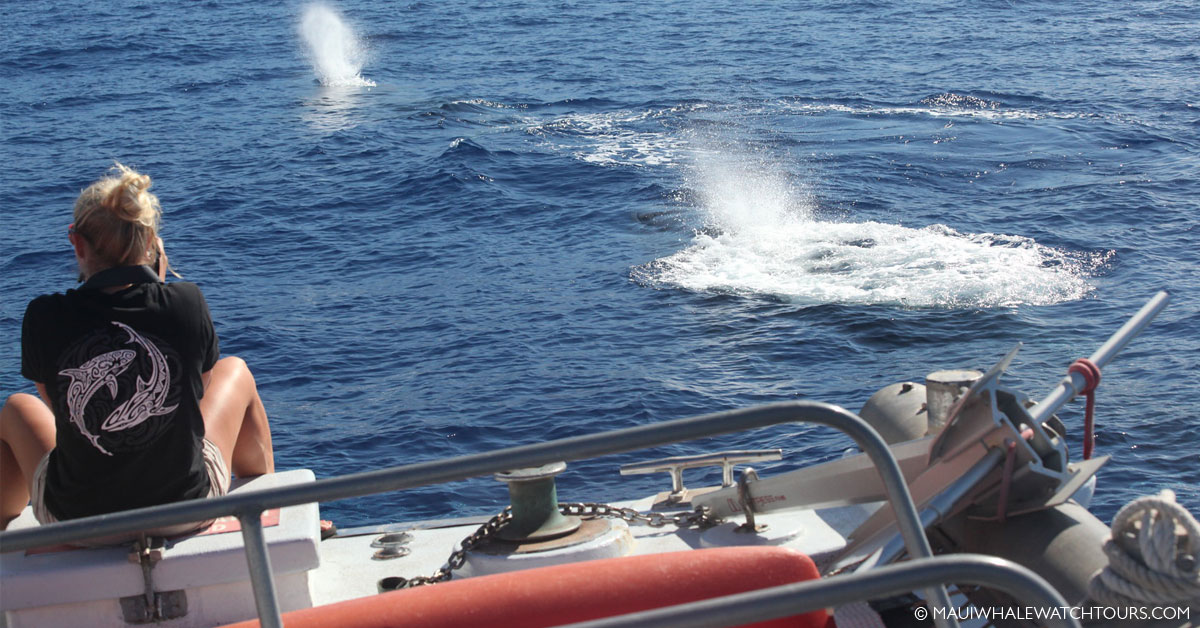
10. PRINT YOUR PICTURES!
This goes for anyone shooting anything with digital. Too many people have all of their photos on their hard drives. Despite the obvious dangers of losing your pictures from a computer malfunction, how often do you really show people your pictures from your monitor? Share all you like on the web, but print some up for safekeeping. You’ll appreciate them later in life.
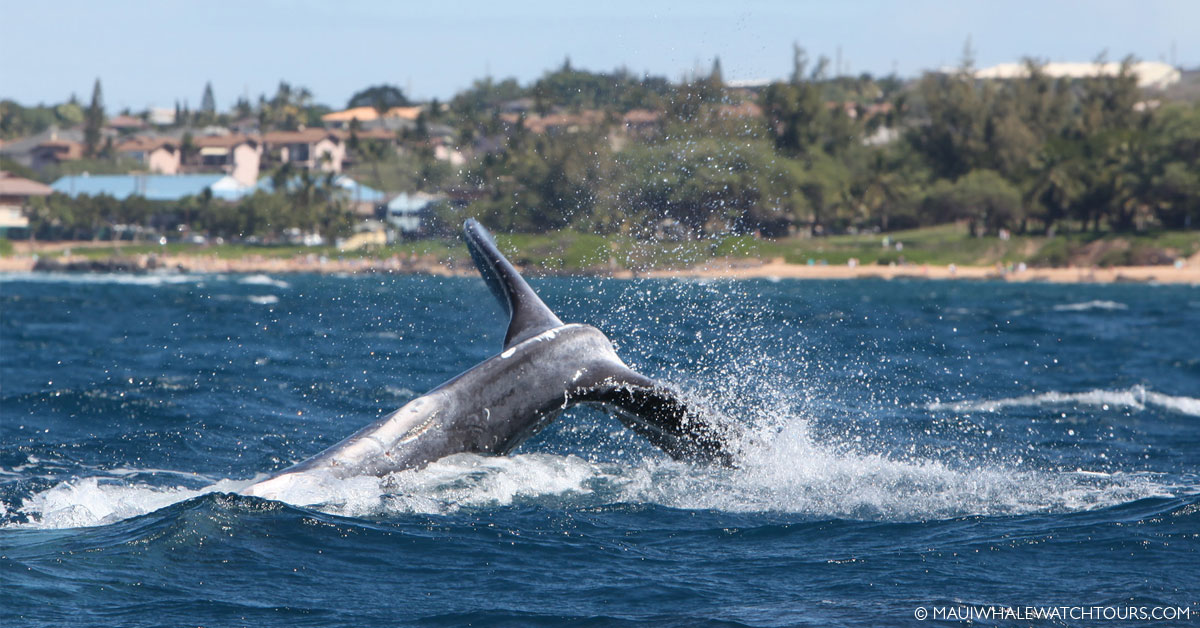
Pride of Maui
The Pride of Maui is a stable, spacious catamaran with open decks for incredible views. Naturalists on board share insights about humpback behavior as you watch for breaches, tail slaps, and mothers with calves. With plenty of room, shade, and fresh meals, it’s a comfortable and family-friendly way to whale watch.
Trilogy Excursions
Trilogy has been hosting Maui visitors for over 40 years, and the knowledgeable crew and spacious catamarans make for an informative and comfortable day on the water.

